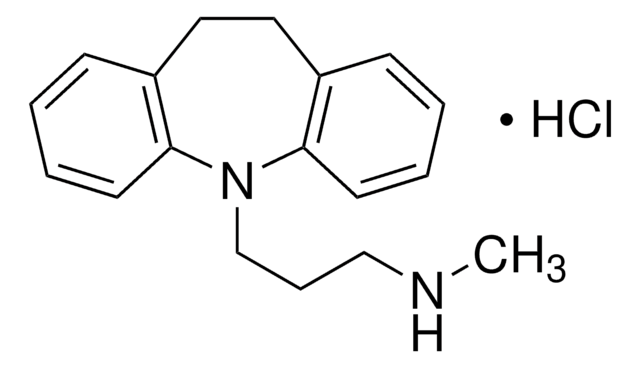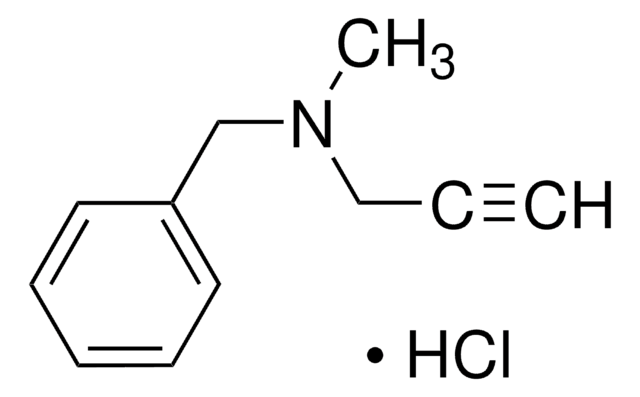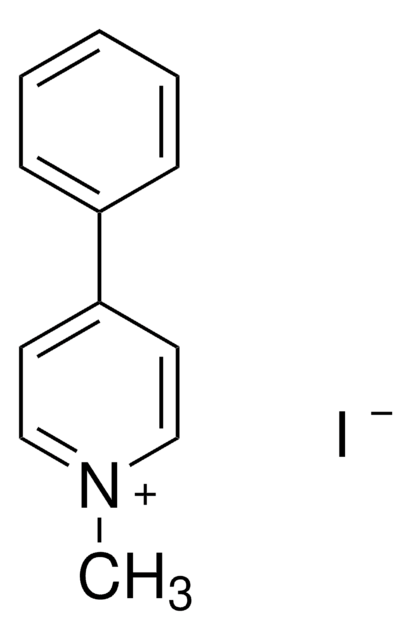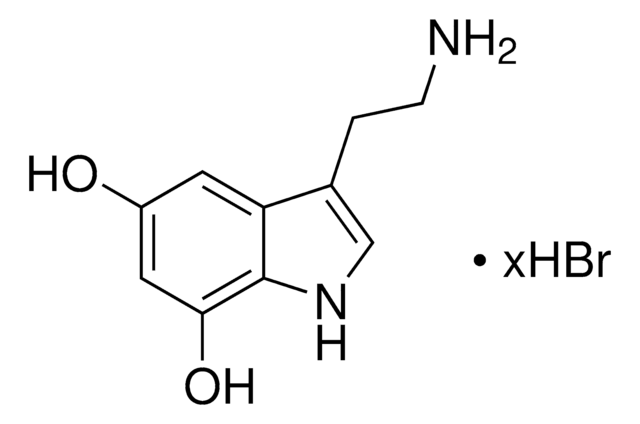Wichtige Dokumente
162957
6-Hydroxydopamin -hydrobromid
95% (HPLC), powder, neurotoxin
Synonym(e):
2,5-Dihydroxy-tyramin -hydrobromid, 2-(2,4,5-Trihydroxyphenyl)-ethylamin -hydrobromid, 6-OHDA
About This Item
Empfohlene Produkte
Produktbezeichnung
6-Hydroxydopamin -hydrobromid, 95%
Assay
95%
Form
powder
mp (Schmelzpunkt)
216-220 °C (lit.)
Lagertemp.
−20°C
SMILES String
Br.NCCc1cc(O)c(O)cc1O
InChI
1S/C8H11NO3.BrH/c9-2-1-5-3-7(11)8(12)4-6(5)10;/h3-4,10-12H,1-2,9H2;1H
InChIKey
MLACDGUOKDOLGC-UHFFFAOYSA-N
Suchen Sie nach ähnlichen Produkten? Aufrufen Leitfaden zum Produktvergleich
Allgemeine Beschreibung
Anwendung
- to induce Parkinson′s disease (PD) in mouse models to study the effects of tubastatin A (TBA) on nucleotide-binding oligomerization domain and leucine-rich repeat pyrin 3 domain (NLRP3) activation and cell injury in SH-SY5Y cells
- to induce pharmacological ablation of the sympathetic nerves to study the effect of hepatic sympathetic nerve activity (SNA) on hepatic steatosis during diet-induced obesity in mice
- to induce oxidative stress in mesencephalic cells to study its effect on p75NTR signaling in neuronal cells of the ventral mesencephalon
Biochem./physiol. Wirkung
Signalwort
Warning
H-Sätze
Gefahreneinstufungen
Eye Irrit. 2 - Skin Irrit. 2 - STOT SE 3
Zielorgane
Respiratory system
Lagerklassenschlüssel
11 - Combustible Solids
WGK
WGK 3
Persönliche Schutzausrüstung
dust mask type N95 (US), Eyeshields, Gloves
Hier finden Sie alle aktuellen Versionen:
Besitzen Sie dieses Produkt bereits?
In der Dokumentenbibliothek finden Sie die Dokumentation zu den Produkten, die Sie kürzlich erworben haben.
Kunden haben sich ebenfalls angesehen
Unser Team von Wissenschaftlern verfügt über Erfahrung in allen Forschungsbereichen einschließlich Life Science, Materialwissenschaften, chemischer Synthese, Chromatographie, Analytik und vielen mehr..
Setzen Sie sich mit dem technischen Dienst in Verbindung.










